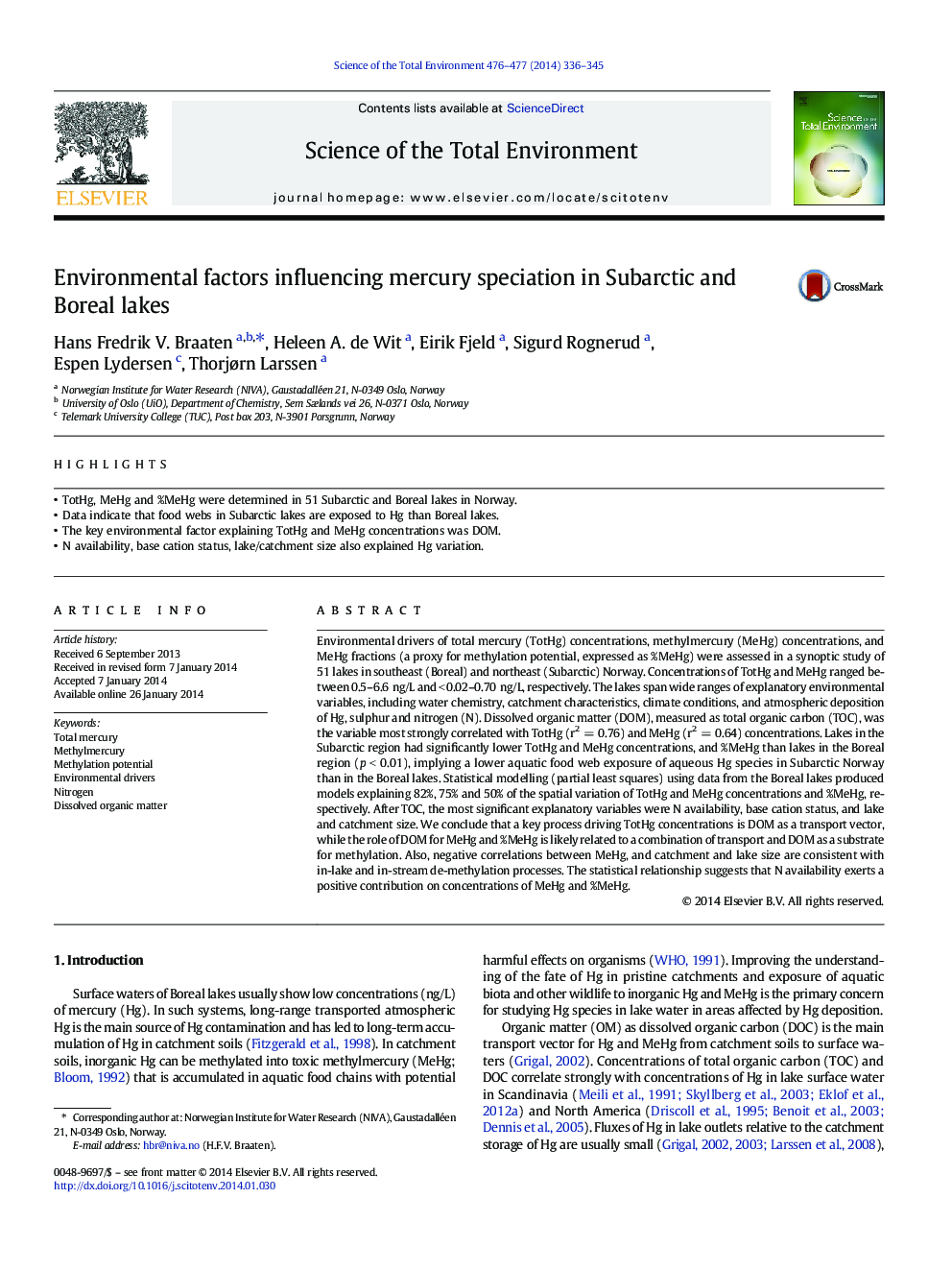| کد مقاله | کد نشریه | سال انتشار | مقاله انگلیسی | نسخه تمام متن |
|---|---|---|---|---|
| 4428549 | 1619789 | 2014 | 10 صفحه PDF | دانلود رایگان |

• TotHg, MeHg and %MeHg were determined in 51 Subarctic and Boreal lakes in Norway.
• Data indicate that food webs in Subarctic lakes are exposed to Hg than Boreal lakes.
• The key environmental factor explaining TotHg and MeHg concentrations was DOM.
• N availability, base cation status, lake/catchment size also explained Hg variation.
Environmental drivers of total mercury (TotHg) concentrations, methylmercury (MeHg) concentrations, and MeHg fractions (a proxy for methylation potential, expressed as %MeHg) were assessed in a synoptic study of 51 lakes in southeast (Boreal) and northeast (Subarctic) Norway. Concentrations of TotHg and MeHg ranged between 0.5–6.6 ng/L and < 0.02–0.70 ng/L, respectively. The lakes span wide ranges of explanatory environmental variables, including water chemistry, catchment characteristics, climate conditions, and atmospheric deposition of Hg, sulphur and nitrogen (N). Dissolved organic matter (DOM), measured as total organic carbon (TOC), was the variable most strongly correlated with TotHg (r2 = 0.76) and MeHg (r2 = 0.64) concentrations. Lakes in the Subarctic region had significantly lower TotHg and MeHg concentrations, and %MeHg than lakes in the Boreal region (p < 0.01), implying a lower aquatic food web exposure of aqueous Hg species in Subarctic Norway than in the Boreal lakes. Statistical modelling (partial least squares) using data from the Boreal lakes produced models explaining 82%, 75% and 50% of the spatial variation of TotHg and MeHg concentrations and %MeHg, respectively. After TOC, the most significant explanatory variables were N availability, base cation status, and lake and catchment size. We conclude that a key process driving TotHg concentrations is DOM as a transport vector, while the role of DOM for MeHg and %MeHg is likely related to a combination of transport and DOM as a substrate for methylation. Also, negative correlations between MeHg, and catchment and lake size are consistent with in-lake and in-stream de-methylation processes. The statistical relationship suggests that N availability exerts a positive contribution on concentrations of MeHg and %MeHg.
Journal: Science of The Total Environment - Volumes 476–477, 1 April 2014, Pages 336–345